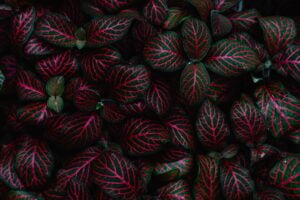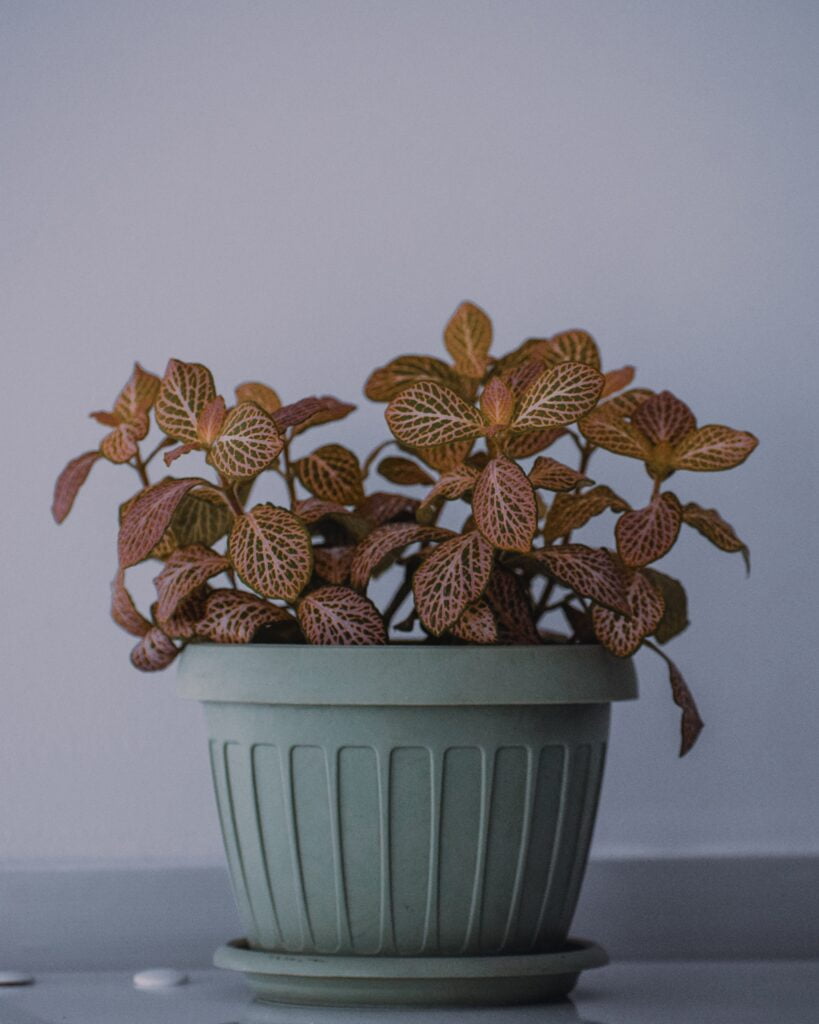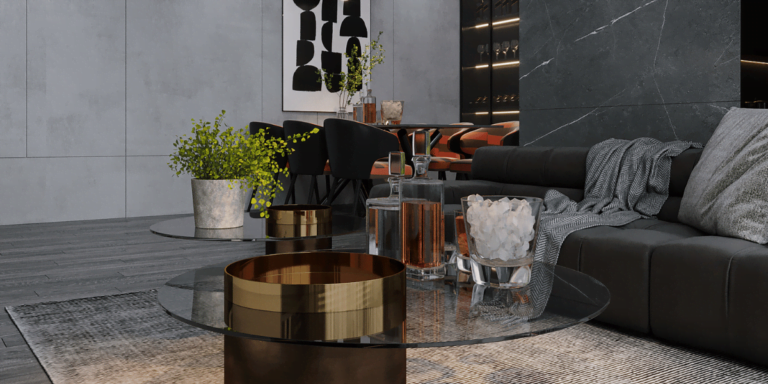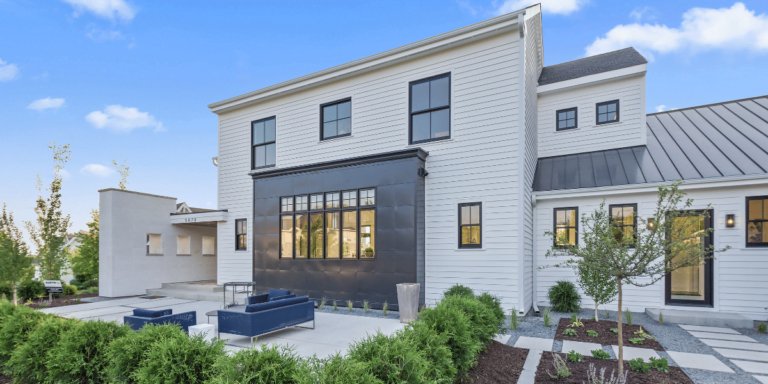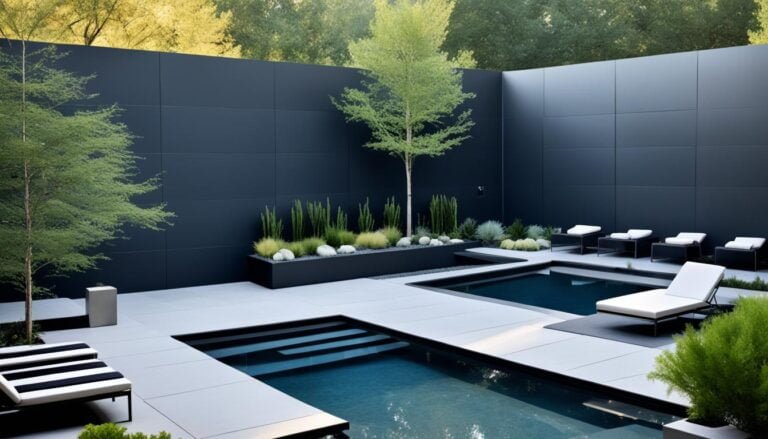Introduction
The Fittonia, also fondly known as the Nerve Plant, is a unique addition to the houseplant family. With its stunning patterned leaves that often shimmer in contrasting colors, it brings both visual interest and a sense of natural calm to indoor spaces. This review dives deep into understanding and catering to this plant’s specific needs, ensuring that your Fittonia thrives.
Fittonia (Nerve Plant) Indoor Plant Details:
| Specification | Details |
|---|---|
| Common Names | Nerve Plant, Mosaic Plant, Painted Net Plant |
| Botanical Name | Fittonia albivenis |
| Family | Acanthaceae |
| Plant Type | Herbaceous perennial |
| Mature Size | Up to 6 inches in height, 12-18 inches in spread |
| Sun Exposure | Bright, indirect light |
| Soil Type | Well-draining mix of potting soil, perlite, and sand |
| Soil pH | Slightly acidic, around 6.0 to 6.5 |
| Bloom Time | Seasonal, typically in summer (though blooms are small and often overlooked) |
| Flower Color | Typically white or pale pink (small in size) |
| Hardiness Zones | Typically grown indoors; outdoors in zones 11 and 12 |
| Native Area | Rainforests of South America, particularly Peru and Colombia |
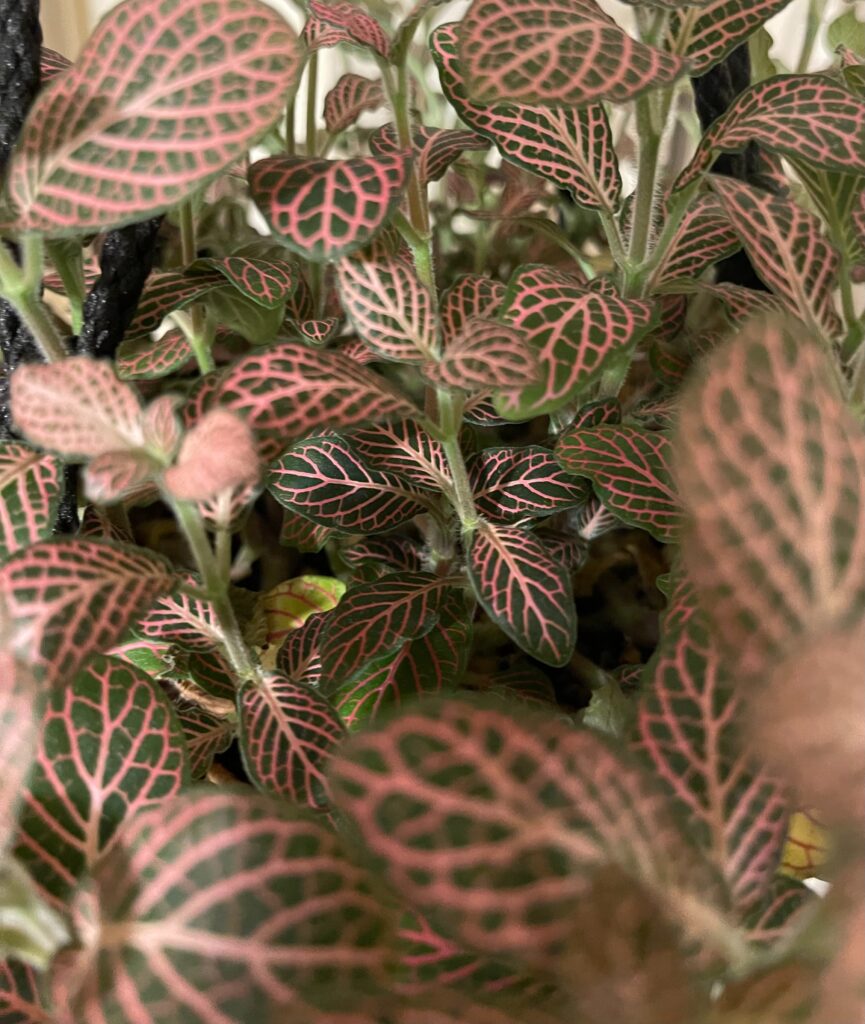 The essential details about the Fittonia (Nerve Plant) at a glance. This makes it easier for plant enthusiasts and gardeners to understand and care for this captivating houseplant.
The essential details about the Fittonia (Nerve Plant) at a glance. This makes it easier for plant enthusiasts and gardeners to understand and care for this captivating houseplant.
Plant Care
The allure of the Nerve Plant lies in its distinctive veined pattern. But beyond its good looks, the Fittonia proves to be a moderately easy plant to care for. Like every indoor plant, understanding its unique requirements is the key to ensuring it flourishes.
Light Requirements
Fittonia thrives in indirect, bright light. However, they can also tolerate low-light conditions. Be wary of direct sunlight, as it can scorch the delicate leaves of the plant. East or North facing windows often provide the perfect amount of light. Rotate your Fittonia occasionally to ensure even growth on all sides.
Soil Preferences
A well-draining soil is crucial. A mixture of potting soil, perlite, and sand can create the right environment for its roots. The slight acidity also works wonders, aiming for a pH level around 6.5. Ensure your pot has drainage holes to prevent waterlogging, which can lead to root rot.
Watering Schedule
The Nerve Plant prefers its soil to be kept moist but not soggy. It’s best to water when the top inch of soil feels dry. Overwatering can be harmful, so it’s important to ensure that the pot allows for proper drainage. Using a saucer beneath the pot can help catch excess water.
Temperature and Humidity Necessities
Fittonia enjoys a humid environment. A humidity level of 50% or more is ideal. They are tropical plants and prefer temperatures between 60-80°F (15-27°C). Avoid sudden temperature drops. If your home is dry, consider placing a humidifier near the plant or regularly misting it.
Fertilizer Needs
Feed your Fittonia every 4-6 weeks during the growing season (spring and summer) with a balanced, water-soluble fertilizer. Reduce feeding in the fall and winter when the plant’s growth slows down.
Pruning Techniques
Pruning helps in maintaining the bushy appearance of your Nerve Plant. Regularly pinch off the tips of new growth to encourage branching. Remove yellow or damaged leaves to ensure the plant’s energy is directed towards healthy growth.
Overwintering
As winter approaches, ensure your Fittonia is not close to cold drafts or windows. They are sensitive to cold. If you live in a region with harsh winters, consider moving your plant to a warmer spot during the colder months.
Propagating Your Plant
Fittonia can be propagated using stem cuttings. Simply cut a healthy stem just below a leaf node and place it in water. Once roots appear, transfer it to a pot with soil. This is an excellent way to multiply your collection or gift a piece of your cherished Nerve Plant to a friend.
Signs of a Quickly Declining Fittonia
Drooping leaves can be an early sign of either overwatering or underwatering. Yellowing leaves may indicate too much light. Regularly checking your plant can help address issues before they escalate.
Types of Fittonia (Nerve Plant)
The Fittonia genus boasts several captivating varieties that differ primarily in leaf colorations and patterns:
- Fittonia ‘Red Vein’: As the name suggests, this variety flaunts deep red veins against a green backdrop.
- Fittonia ‘White Anne’: This variety has a striking appearance with white veins on dark green leaves.
- Fittonia ‘Pink Angel’: A fan favorite, this variety has soft pink veins against luscious green leaves.
- Fittonia ‘Skeleton’: This has bolder white veins creating an almost skeletal pattern against a dark green surface.
While there are various types, each one requires similar care, emphasizing their flexibility and adaptability in different indoor settings.
Common Pests & Plant Diseases with Solutions
- Aphids: Small bugs that can be green, black, or white. They suck the sap from the Fittonia, hindering its growth.
Solution: Use insecticidal soap or neem oil. Ensure proper ventilation for your plant.
- Aphids: Small bugs that can be green, black, or white. They suck the sap from the Fittonia, hindering its growth.
- Mealybugs: White, cotton-like pests that can be found on the underside of leaves.
Solution: Remove with a cotton swab dipped in alcohol. Regularly inspect and maintain cleanliness.
- Mealybugs: White, cotton-like pests that can be found on the underside of leaves.
- Overwatering: This can lead to root rot.
Solution: Ensure well-draining soil and proper drainage holes in the pot. Water only when the topsoil is dry.
- Overwatering: This can lead to root rot.
- Leaf Spot Disease: Fungi or bacteria cause spots on leaves.
Solution: Remove affected leaves, reduce humidity around the plant, and ensure it has adequate ventilation.
- Leaf Spot Disease: Fungi or bacteria cause spots on leaves.
How to Encourage Fittonia to Bloom
While the Fittonia is primarily grown for its foliage, it does produce flowers, albeit they are quite small and not very showy. To encourage blooming:
- Provide Adequate Light: While the plant doesn’t favor direct sunlight, ensuring it gets bright, indirect light can promote flowering.
- Fertilize Properly: Using a balanced fertilizer during the growing season can provide the necessary nutrients for blooming.
- Maintain Proper Humidity: Mimicking its native tropical environment can stimulate the plant to bloom.
Common Problems with Fittonia
- Drooping: This is usually a sign of under-watering. Check the soil moisture and adjust your watering schedule.
- Leaf Curling: Indicates a lack of humidity. Mist the plant regularly or use a room humidifier.
- Yellowing Leaves: Could be a result of overwatering or too much direct sunlight. Adjust the plant’s location and ensure proper drainage.
- Stunted Growth: This might be due to inadequate light or the need for fertilization. Make sure the plant is getting bright, indirect light and consider feeding it with a balanced fertilizer.
In summary, the Fittonia, with its wide array of types, is a beautiful addition to any indoor space. By being aware of potential problems and understanding how to care for and propagate this plant, one can enjoy its visual charm for years to come. The key lies in knowing its requirements and being vigilant about its health.
Embracing The Nerve Plant: Final Thoughts
The Fittonia, with its eye-catching foliage and adaptable nature, makes a delightful indoor companion. By catering to its specific needs, you can ensure it remains a vibrant and enchanting part of your indoor garden.
With its intricate patterns and adaptable nature, the Nerve Plant proves to be an indoor favorite for many enthusiasts. By paying attention to its specific needs, from lighting to watering, this plant can thrive and become a cherished member of any indoor plant collection. Whether you’re a novice or a seasoned gardener, the Fittonia offers a blend of beauty and ease that’s hard to resist.
Frequently Asked Questions
Decode the magic of gardens with our guide to Landscaping Styles Frequently Asked Questions.
- Typically, repotting every 2-3 years is sufficient. If you notice its roots outgrowing the pot, it might be time for a bigger home.
- No, Fittonia is considered non-toxic to both cats and dogs.
- Curling leaves can be a sign of low humidity. Consider misting your plant or using a humidifier.
- Regular pruning or pinching off the tips of new growth can promote a bushier appearance.
Recent Posts
- Modern Mural Ideas Transforming Walls into Artworks
- Thematic Table Decor Dressing Your Table for Special Occasions
- Festive Lighting Ideas Brightening Your Home for the Holidays
- Biodegradable Decor Materials Choosing Earth-Friendly Options
- Personalized Space Decor Making Your Home Uniquely Yours
- New Year’s Eve Decor Ringing in the New Year in Style
- Transforming Junk into Decor Upcycling at Its Best
- Second-Life Decor Objects Giving Old Items New Purpose
- Unique Decoration Crafting Standout Ideas for Your Home
- Environmentally Friendly Styling Decor with a Conscience

